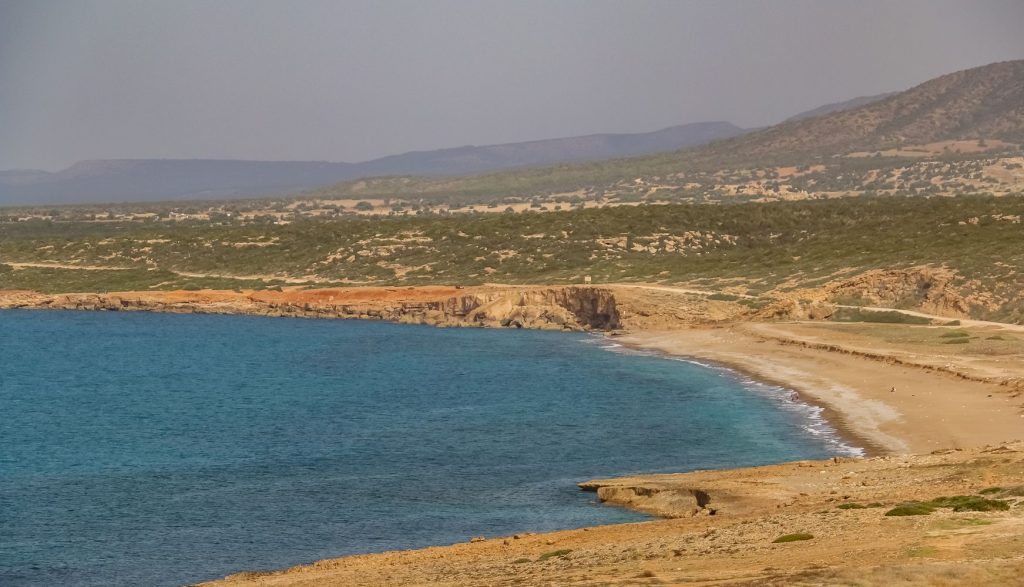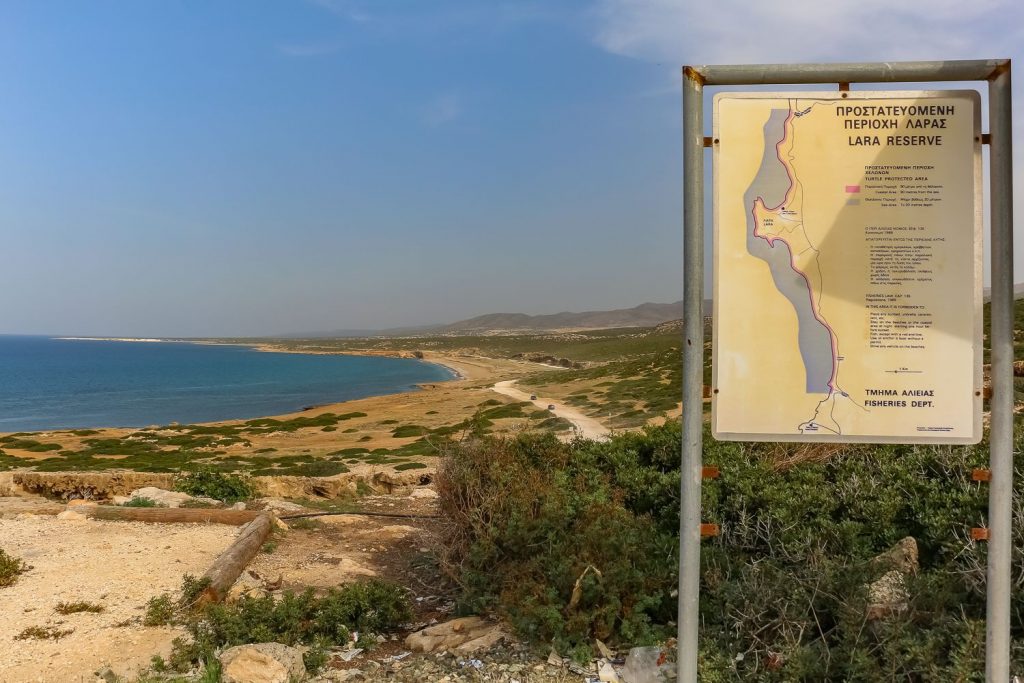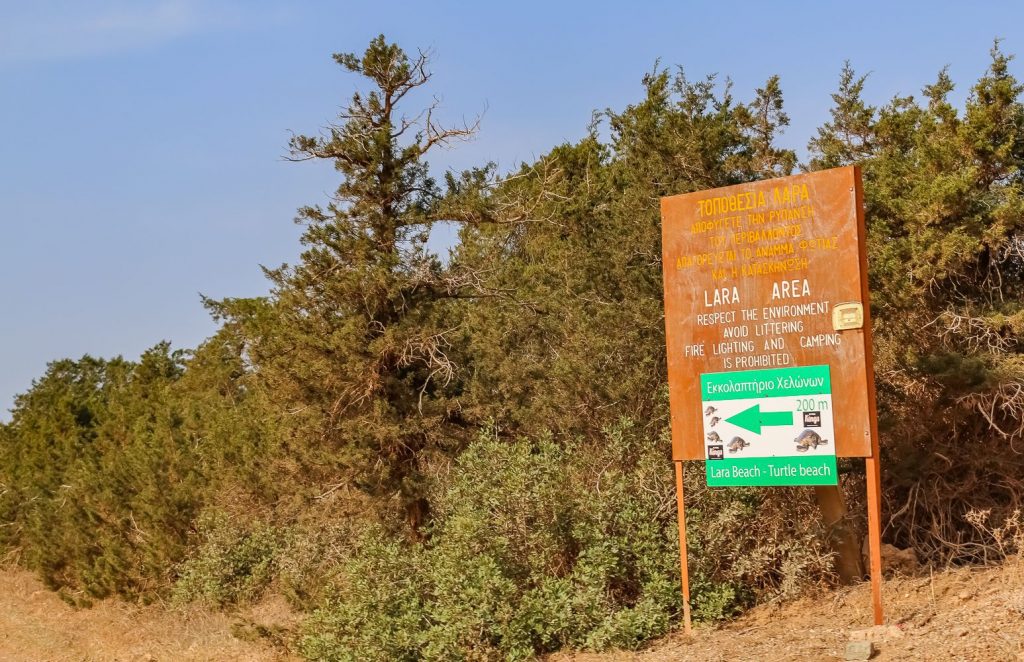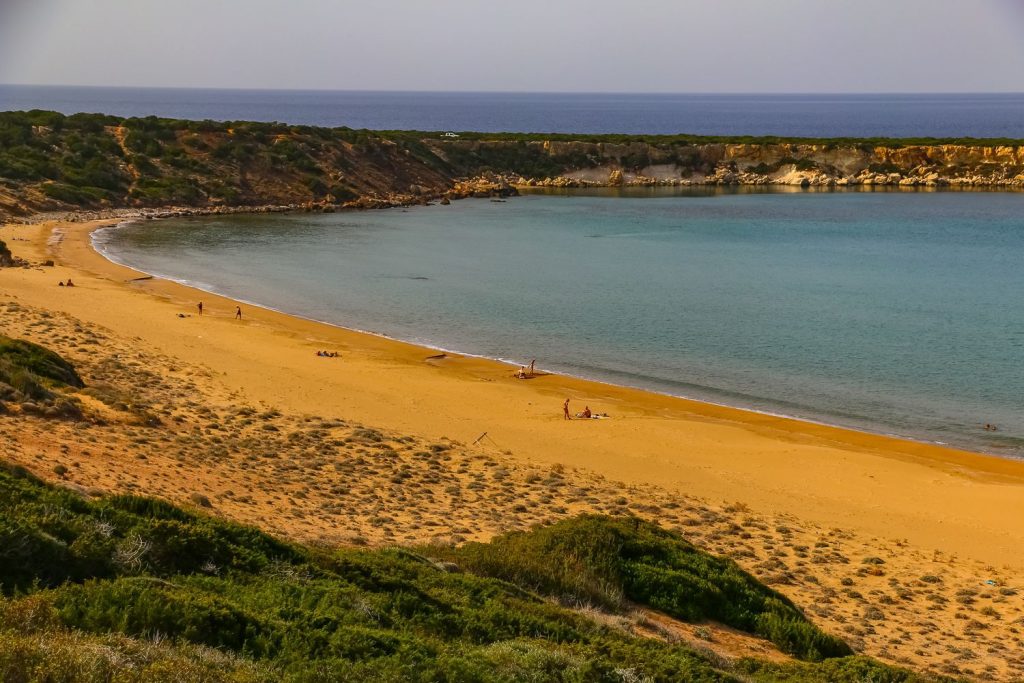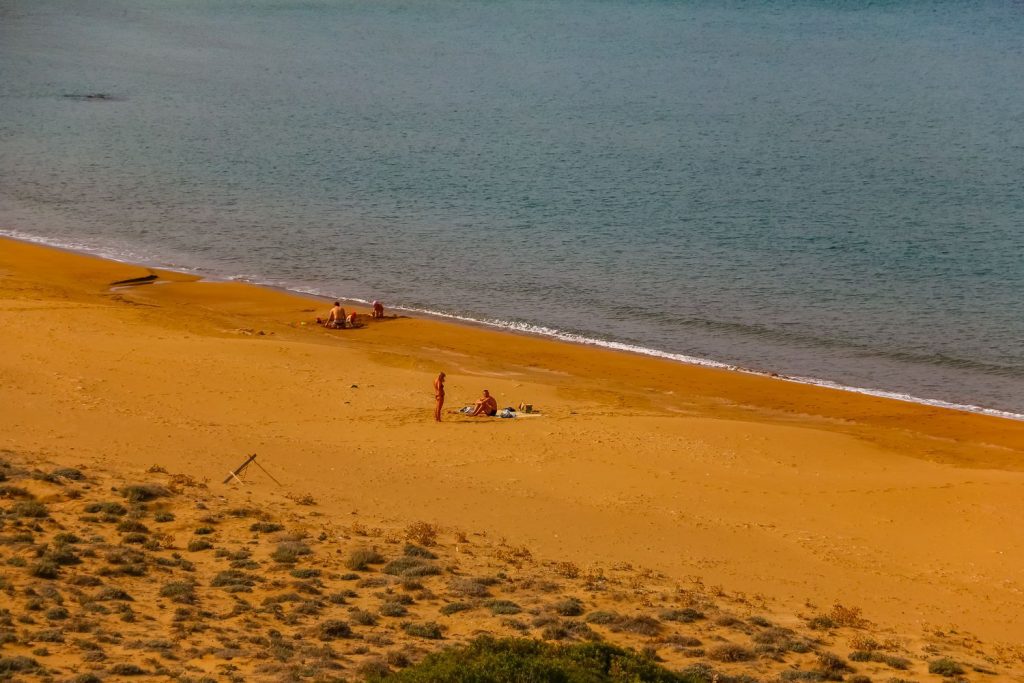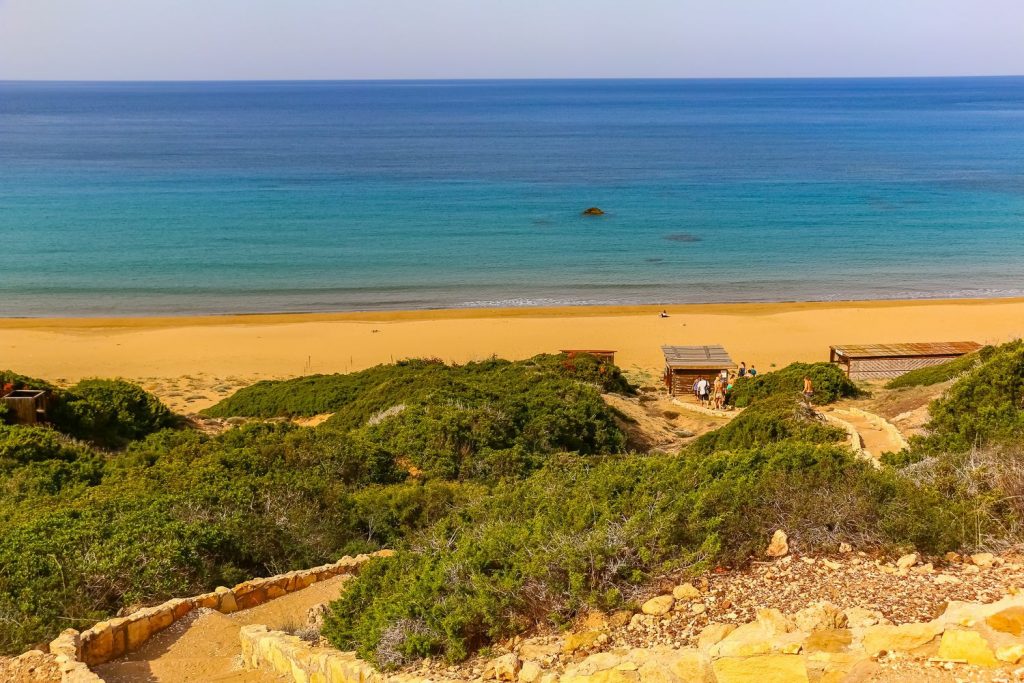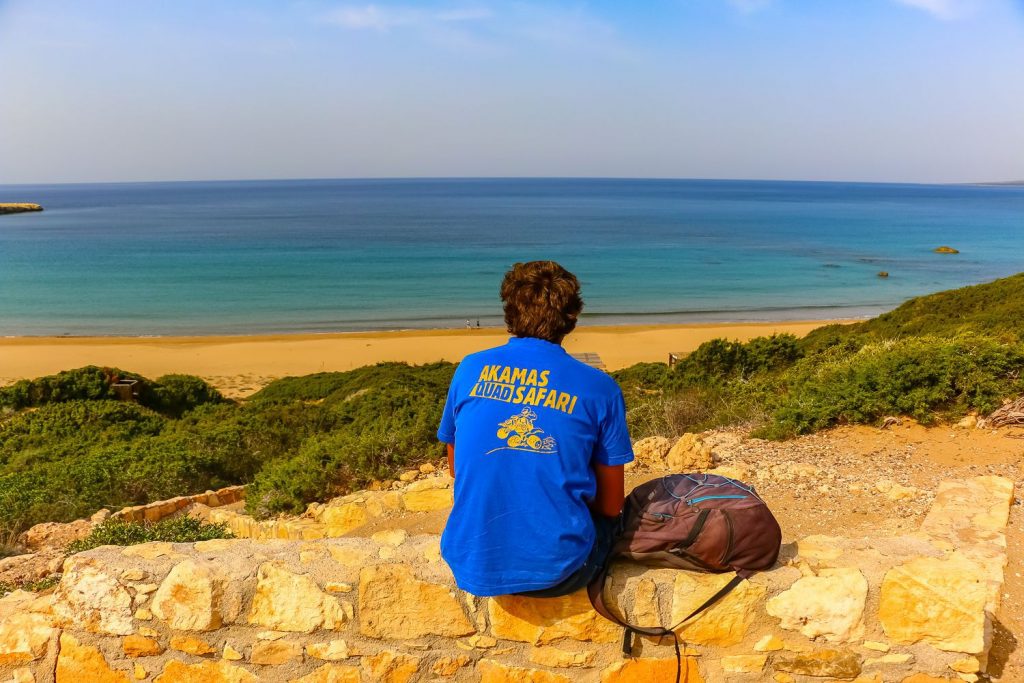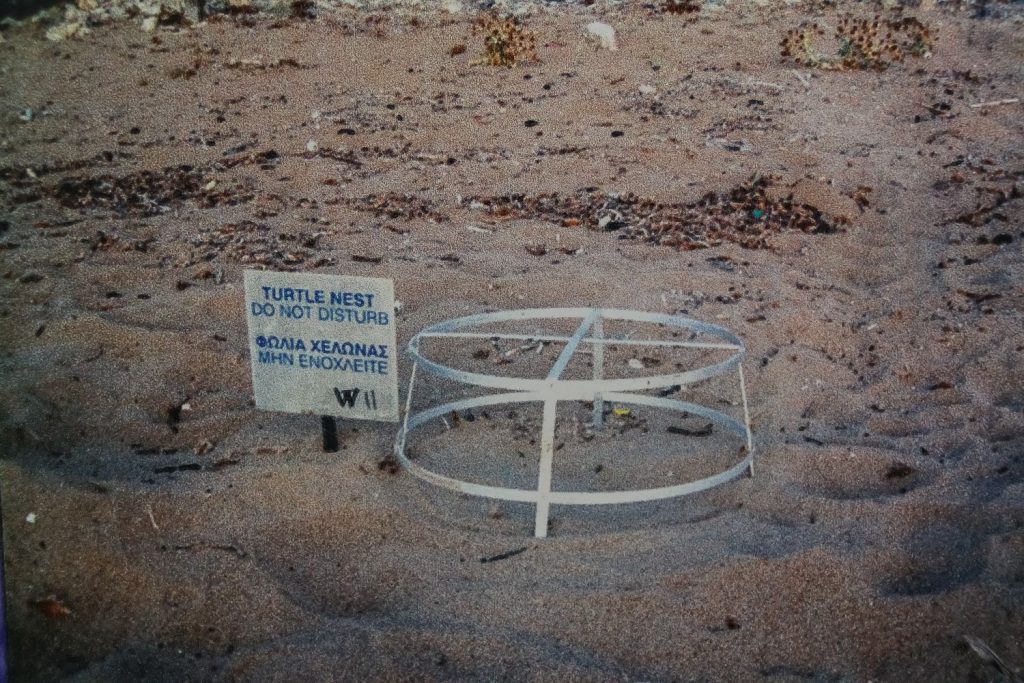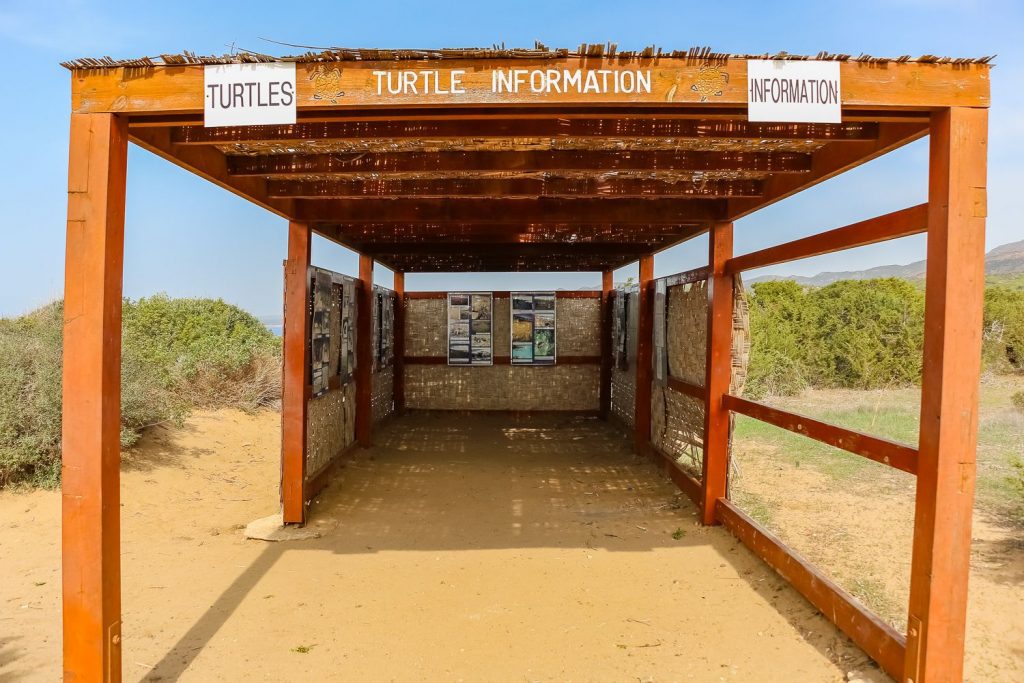Lara Beach
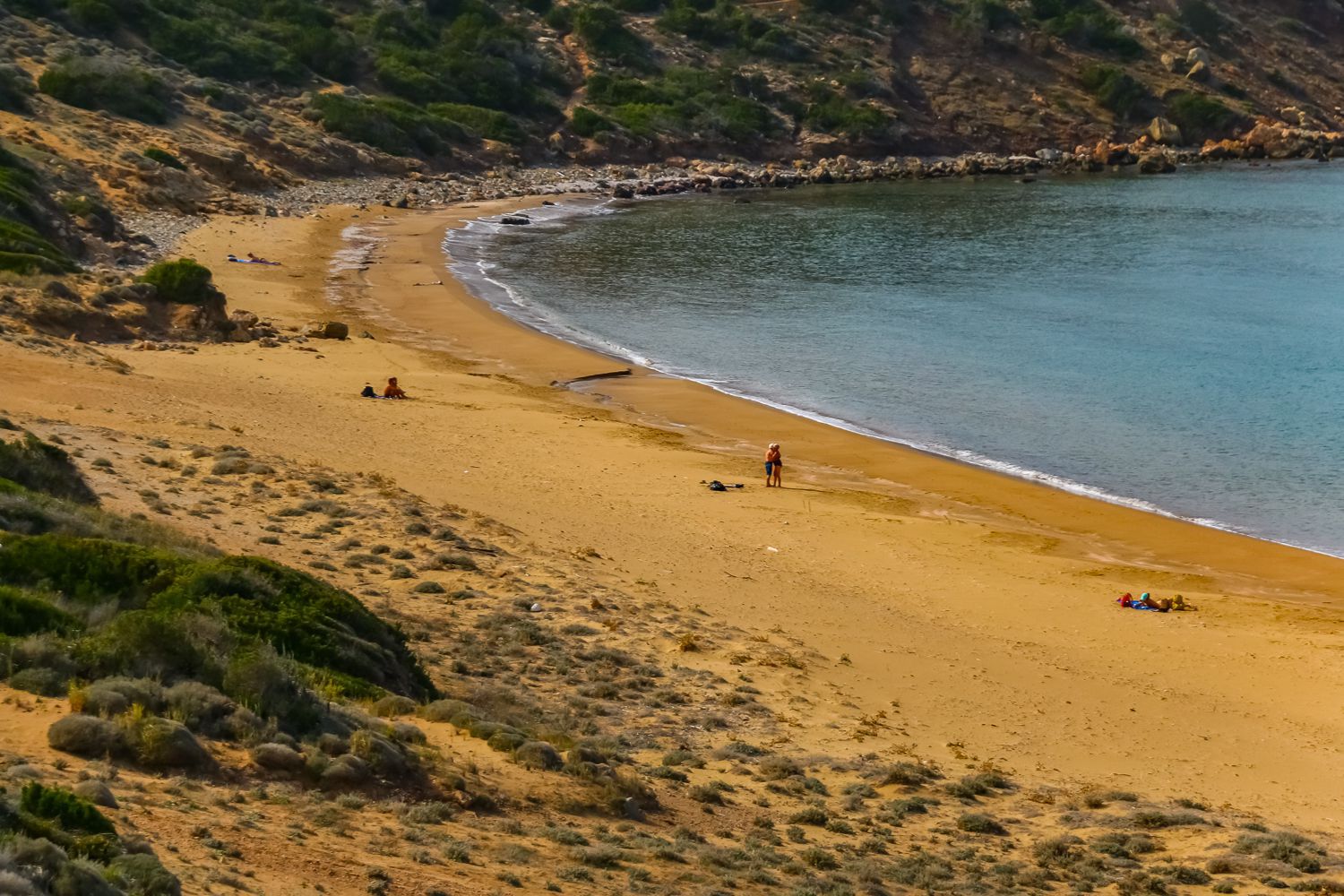
Lara beach is the northern bay of the Lara coastline in Cyprus, and is located approximately 25 kilometers north of Paphos and 13 km northwest of Peyia.
Synonymous with the westernmost parts of Cyprus, Lara Beach is situated right before the Akamas peninsula. In a landscape that is a must for off-road exploration, lonely, ascetic, exuding a calm energy, you will find a horseshoe shaped bay. The beach attracts the most "hippy" tourists, due to the “informal” setting and the absence of any infrastructure. Most visitors coming here, after the trouble of the bumpy dirt road, stay at the beach till late in order to admire the sun coloring the waters red at sunset. Also, if you are lucky enough, you might get the chance to swim along huge, 150 years old turtles.
On the isolated, wild and imposing Lara beach, turtles come to lay eggs, namely the Mydas turtle species – one of the special species of fauna in Cyprus, also known as the hawksbill turtle, which are threatened with extinction. Along with the less famous beach Toxevtra, they are strictly protected by the relevant services (Specially Protected Areas of the Barcelona Convention and
the European Network of Biogenetic Reserves), according to which their hunting is strictly prohibited, and there are no specifications for touristic development in the future. These turtles nest in the Mediterranean, mainly in Turkey and Cyprus, and this golden sand is one of the most important nesting beaches during the early summer months. Indeed, every 2-4 years, the shoreline is closed to the visitors, until the likeable reptiles lay their eggs. The nests of the turtles are marked with special cages, where they are situated, while to the hatchery (Lara Station) are transported the nests from other tourist beaches, which are not viable as habitats.
Access to Lara beach requires a 4×4 vehicle (alternatively mountain bikes) in order to fully enjoy the wild scenery of the region, while many visitors choose to go for a ride on horseback along the shoreline. Apart from the endless Akamas Cape, the Avakas gorge is situated right next to this deserted peninsula and is a favorite destination of hikers and not only. Then there are the Karavopetra, the steep cliffs in the sea, – according to the legend they are old Saracen ships that were petrified by the Virgin Mary of Vlou (Panagia tou Vlou), which challenge the hikers to walk their rocky cliffs. Finally, in the area there you will also find a camping area.

